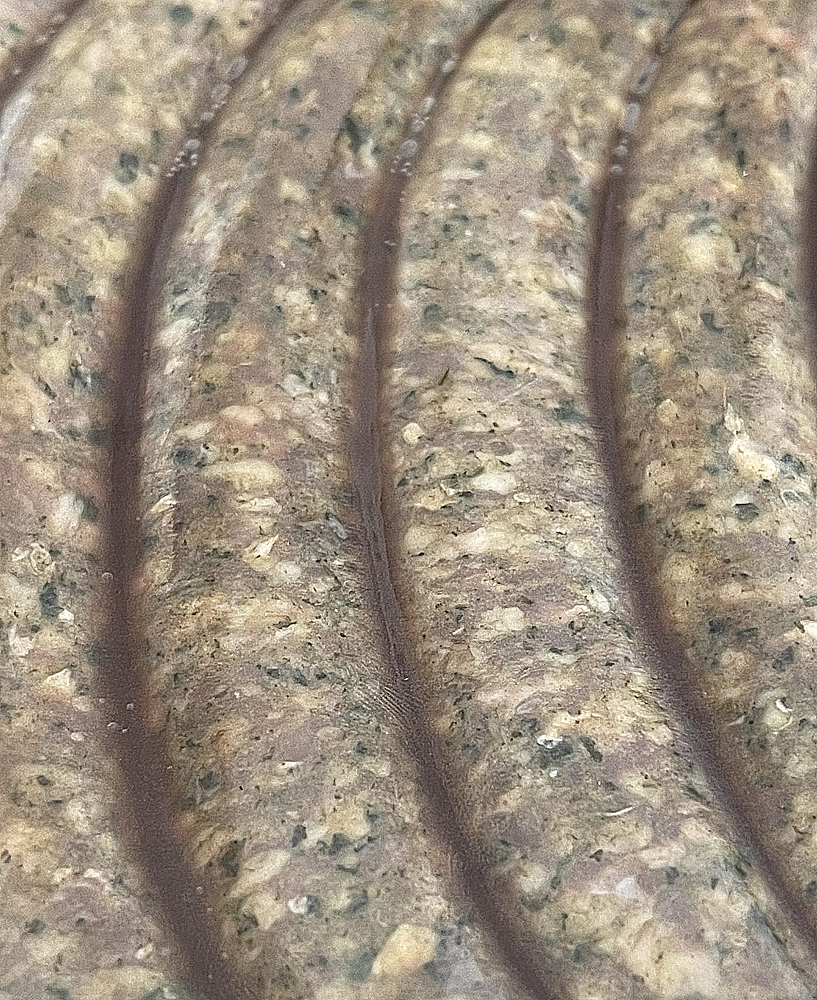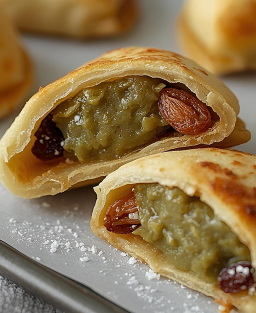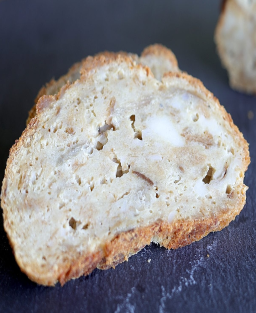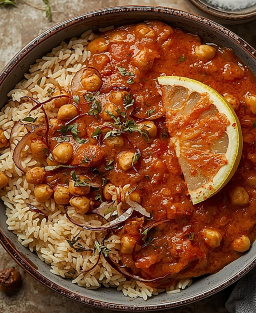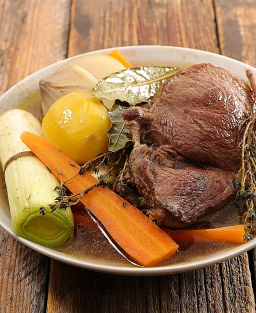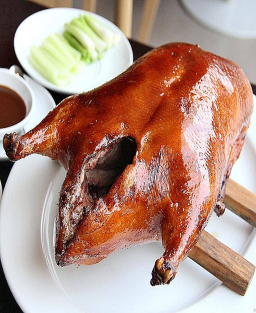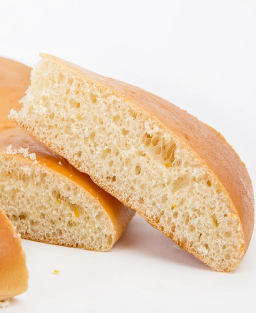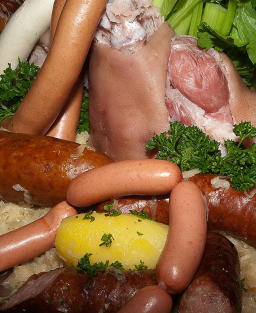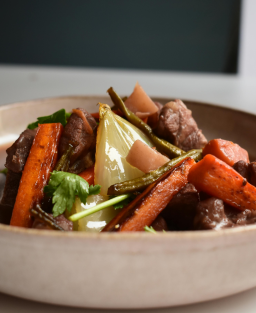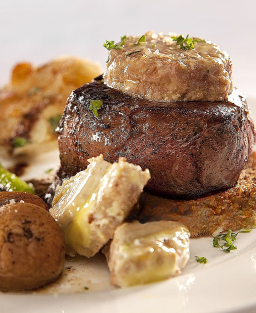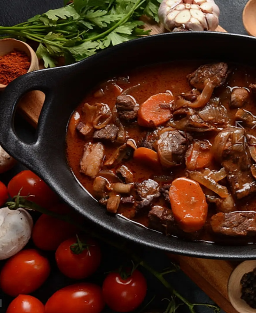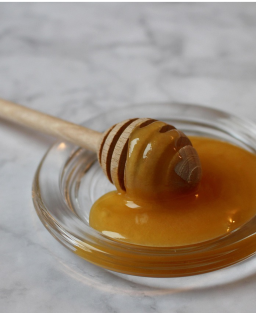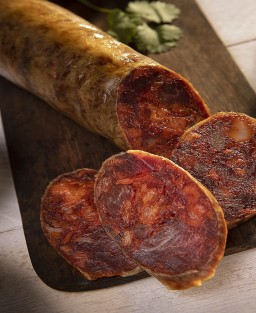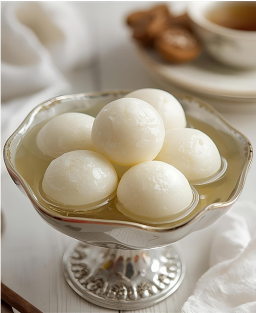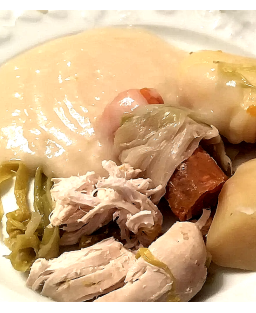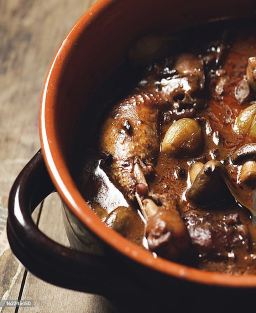Authentic Pormonaise Recipe: Traditional Green Sausage from Savoy
Authentic Pormonaise Recipe: Traditional Green Sausage from Savoy
Discover the traditional recipe for pormonaise, a green sausage from Savoy made with pork and vegetables.
Required Utensils
-
Meat grinder (6–8 mm plate)
-
Large stainless steel mixing bowl
-
Paring knife
-
Cutting board
-
Sausage stuffer or sausage funnel
-
Natural casings (pork intestines)
-
Butcher’s twine
-
Stockpot or large saucepan for poaching
-
Colander
-
Cold room or refrigerator for resting
Country / Region
-
Country: France
-
Region: Savoy / Haute-Savoie (Alps)
-
Recipe origin: Oral tradition
-
Specifications document: None
-
Suggested guidelines:
-
Ingredients: pork (meat + fat), liver, Swiss chard, onion, parsley, salt, pepper, nutmeg
-
Vegetable content ≥ 30%, no additives
-
Natural casings mandatory
-
Minimum rest time of 12 h before cooking
-
Core temperature ≥ 70 °C during cooking
-
“Traditional recipe” label required for artisanal sale
-
-
-
Recipe evolution: Reduction in use of offal, addition of vegetables other than chard (spinach, cabbage, leek), adaptation to modern commerce (vacuum packaging, sterilization), lower-fat versions
-
Notable chefs and contributions:
-
Chef Marc Veyrat: reintroduced pormonaise in his regional menus, sometimes served with porcini mushroom sauce
-
Nicolas Claus (Maison Pineau): promoted traditional recipes in the Arve Valley, artisanal pormonaise production
-
Christian Favre (Salaisons du Mont Charvin): maintains traditional methods of mincing, seasoning, and natural casing work for an authentic product
-
Recognized Local Producers of Pormonaise or Variants
-
Maison Pineau – Magland (Haute-Savoie): traditional Savoyard charcuterie, artisanal pormonaise
-
Terroirs des Alpes – La Bâthie (Savoy): house-made pormonier, direct sales
-
Salaisons du Mont Charvin – Doussard (Haute-Savoie): local pork, artisanal sausages and cured meats
-
Maison Alpin – Haute-Savoie: mountain-style artisanal charcuterie, family know-how
-
Chez François – Haute-Savoie: traditional cured meat products, including pormonier
-
La Ferme de l’Angélie – Poisy: short supply chain distribution of local charcuterie
History
-
Origin: Pormonaise is a traditional green sausage from Savoy, rooted in the self-sufficient peasant economy. It made use of the entire pig and winter garden vegetables (mainly Swiss chard, sometimes cabbage or leeks).
-
Evolution: The recipe has evolved with the gradual abandonment of some offal (such as lungs), the addition of more vegetables, and the industrialization of production.
-
Notable chefs:
-
Marc Veyrat: integrated pormonaise into a modern take on Savoyard terroir cuisine
-
Nicolas Claus: preservation and transmission of authentic rural recipes
-
Christian Favre: artisanal charcutier committed to preserving Savoyard charcuterie heritage
-
Legend or Anecdote
The name “pormonier” is thought to come from the word “poumon” (lung), a once-common ingredient in the traditional recipe, often used alongside liver. A popular anecdote says that in certain valleys, elders would open the cooked sausages and eat only the filling with a spoon, discarding the casing.
Recipe Description
Pormonaise is a green sausage to be cooked, made from pork meat and liver, green vegetables (mainly Swiss chard), seasoned and stuffed into natural casings. It is poached slowly over low heat and served hot, often with potatoes or crozets. It stands out for its soft texture and its lightly marbled green color.
Ingredients
| Ingredient Name | Quantity | Approx. Weight (g) |
|---|---|---|
| Pork belly | 1 kg | 1,000 |
| Pork fat or jowl | 250 g | 250 |
| Pork liver | 250 g | 250 |
| Swiss chard (leaves) | QS (approx. 500 g) | 450–500 |
| Yellow onion | 1 medium | ~100 |
| Flat-leaf parsley | 1 bunch | ~20 |
| Fine salt | QS | 20 |
| Ground black pepper | QS | 5 |
| Grated nutmeg | QS | 1 |
| Natural pork casings | QS | — |
Professional Ultra-Detailed Description
Total time: 50 min prep + 12 to 24 h rest + 30 to 45 min cooking
Preparation Steps:
-
Blanch the Swiss chard:
-
Wash, remove stems, roughly chop leaves
-
Blanch 2–3 min in boiling salted water
-
Immediately cool in ice water
-
Drain, press firmly, then finely chop
-
-
Cut the meats:
-
Pork belly: cut into 3 cm cubes (keep rind if desired)
-
Jowl/fat: same size
-
Liver: trim carefully (remove veins, membranes), cut into cubes
-
-
Grinding:
-
Use a 6–8 mm plate
-
Grind everything: meat, fat, liver, vegetables
-
Add finely chopped onion and parsley
-
-
Seasoning and mixing:
-
Add salt, pepper, nutmeg
-
Mix by hand until the mixture is smooth and paste-like
-
Refrigerate for 2 h before stuffing
-
-
Stuffing:
-
Rinse casings in warm water
-
Stuff using a sausage stuffer or funnel
-
Form 15 to 20 cm sausages, tied or twisted
-
-
Resting:
-
Hang for 12 to 24 h at 4 °C
-
Allows the filling to stabilize and flavors to meld
-
-
Cooking:
-
Poach in hot water (75–80 °C) for 30 to 45 min
-
Do not boil or prick
-
Internal temperature must exceed 70 °C
-
Nutritional Information (per 100 g – average values)
-
Energy: ~320 kcal / 1,340 kJ
-
Fats: 28 g
-
Saturated fat: 10 g
-
Proteins: 15 g
-
Carbohydrates: 1–2 g
-
Fiber: ~1 g
-
Allergens: pork
-
Adaptations: difficult to adapt for vegetarian or pork-free diets
Glossary
-
Stuffing: filling the casings with the sausage mixture
-
Natural casings: cleaned pork intestines used for sausages
-
Poaching: gentle cooking in simmering liquid
-
Pormonier / pormonaise: names for the green sausage from Savoy, depending on the valley
Regional Versions / Variants
-
Tarentaise: includes chopped cabbage in addition to chard
-
Genevois: sometimes made without liver or with spinach
-
Modern: lower in fat, includes a wider variety of vegetables (leek, spinach), vacuum-packed
Tips and Advice
-
Press vegetables well to avoid a loose filling
-
Do not prick sausages before cooking
-
Maintain a steady poaching temperature
-
Avoid artificial casings: they alter taste and texture
-
For rustic tasting: serve whole or open and eat with a spoon
Serving Suggestions
-
Rustic: served whole with steamed potatoes
-
Gourmet: sliced, plated with celery root purée and reduced jus
-
Classic sides: crozets, diots, polenta, potatoes, lentils
Recommended Wines and Drinks
-
White wine from Savoy: Apremont, Roussette, Chignin-Bergeron
-
Red wine: Mondeuse
-
Other options: mountain-style blonde craft beer, dry cider







